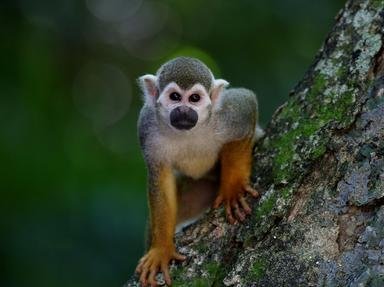Quiz Answer Key and Fun Facts
1. In what countries are the rainforests located where we will be able to meet up with orangutans in the wild?
2. Are all orangutans members of the same species?
3. Orangutans are said to be the most arboreal of the primates. This means they spend more time where than do other primates?
4. Orangutan feet have a useful adaptation for arboreal life. Which of these do they display?
5. Is this Bornean orangutan male or female (and how can you tell)?
6. Orangutans are said to be primarily frugivorous, meaning that which of these foods is the main component of their preferred diet?
7. Orangutans build separate nests for use during the day and at night. Nighttime nests are more elaborate than daytime nests.
8. Orangutans usually have a single infant at a time. Like most primates, the infant requires a long period of care from its mother. What is the usual approximate time interval between successive births for an individual female?
9. Which of these is NOT a term used by primatologists to describe an orangutan's vocalization?
10. The Tapanuli orangutan (pictured) is considered to be one of the most critically endangered of the great apes, with fewer than a thousand individuals living in an area of around 1,000 square kilometres. In 2019 PanEco, a Swiss environmental group that partners with the Indonesian government and the Indonesian group Yayasan Ekosistem Lestari in maintaining the Sumatran Orangutan Conservation Program (SOCP), dropped its opposition to which of these?
Source: Author
looney_tunes
This quiz was reviewed by FunTrivia editor
guitargoddess before going online.
Any errors found in FunTrivia content are routinely corrected through our feedback system.
